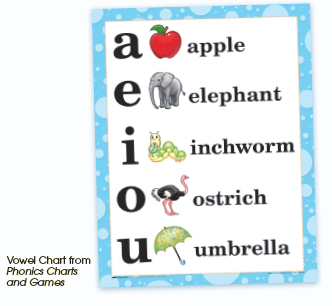
For this reason, spending the time needed to make sure your young reader (or struggling reader) masters this skill is definitely worth it. Young readers will need this skill in later years when they are decoding and learning new, more complex words. Mastering long vowel sound decoding is essential to building a strong reading foundation. Think of words like high, light, sign, mind, pint, comb. If I or O comes right before to consonants, it is usually a long vowel sound. For example: meat, train, please, tree, boat. This simply means that generally, the first vowel is the long vowel sound in the word and the second vowel is silent (or not talking). This rule has a cute saying that you may have heard: “when two vowels go walking, the first one does the talking”. Long vowel sounds can also be created when two vowels are next to each other. For example, hon-ey, hi, mu-sic, me, ban-jo, etc. Vowels are often long vowel sounds when they come at the end of a word. Here are some examples: CVC WordĪt the end of a syllable. Adding an e to the end of a CVC word changes the short vowel sound into a long vowel sound. Let’s look at each type of long vowel formation. Let them get comfortable with that rule before moving on to the next one. When you are teaching long vowels sounds to your young reader, focus on just one of these rules at a time. There are four main ways that long vowels are formed: with a silent e, at the end of a syllable, using vowel teams, and I or O before a consonant. Long vowel sounds occur when the letter “says its name”. A short a, as in apple, makes a sound, but the long a, as in bay says the name of the letter. Long vowels tend to be easier to identify when speaking because the letters “say their names”. No need to ruin story time with a grammar lesson. So, they must make the “a” sound.” or something like that. When two vowels go walking, the first one does the talking.


Just a quick mention “Hey look, that’s a vowel team. As you go over these rules with your child, you can point them out when they pop up while youare reading books and stories together.

Let’s start with how the long vowel sounds are formed.
#TEACHING SHORT VOWEL SOUNDS TO OLDER STUDENTS HOW TO#
Let’s get started! How to Teach Long Vowel Sounds In this post, we are going to talk about when to teach long vowel sounds, some tips for teaching the different rules, and a few fun activities and printables for practicing long vowel sounds. While short vowel sounds are relatively straightforward and spelled the same each time, long vowel sounds are more complex. Is your child struggling with reading or pronouncing long vowel sounds? Are you ready to move past CVC words, but aren’t sure how to teach long vowels in reading and phonics? Long vowel sounds can be a point of struggle for many young readers. This allows me to keep bringing you great content. This means if you buy something through a link in this post, I will make a small commission at no cost to you.


 0 kommentar(er)
0 kommentar(er)
